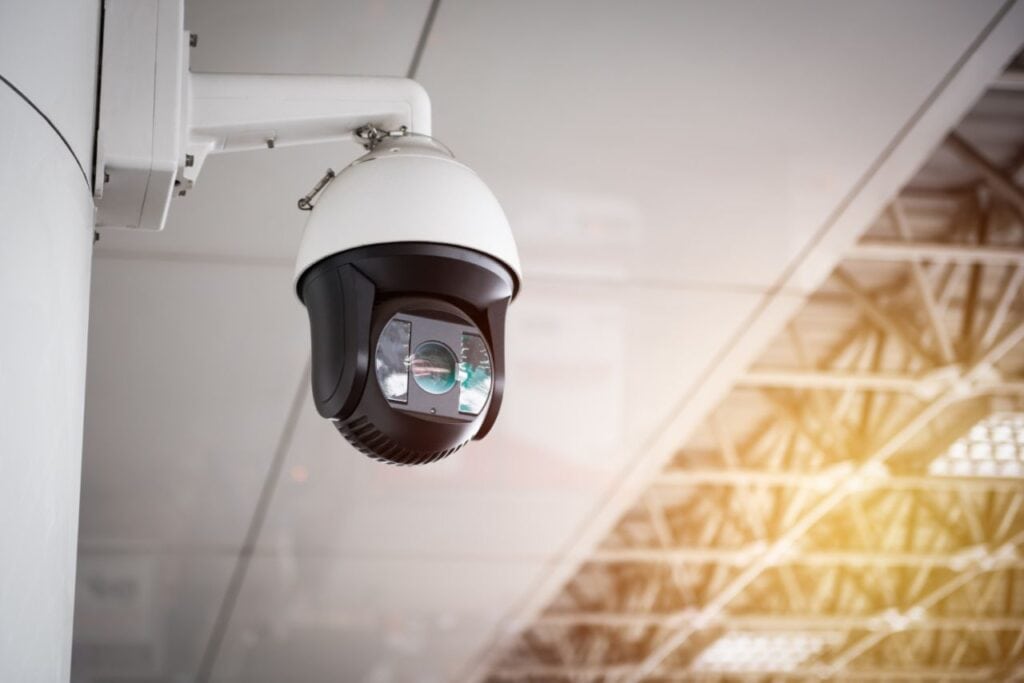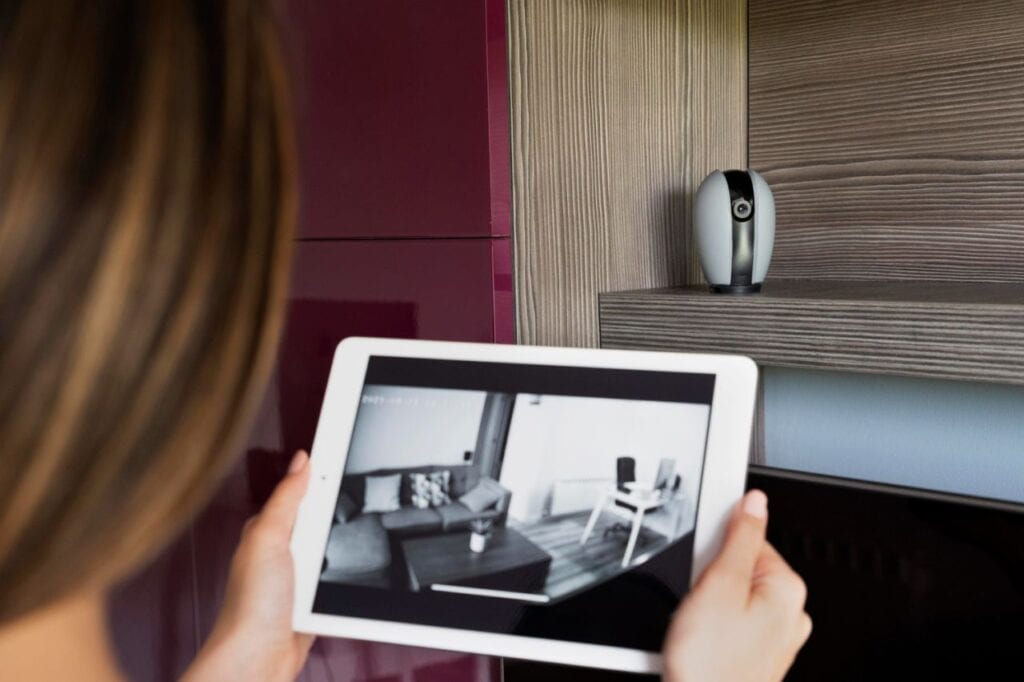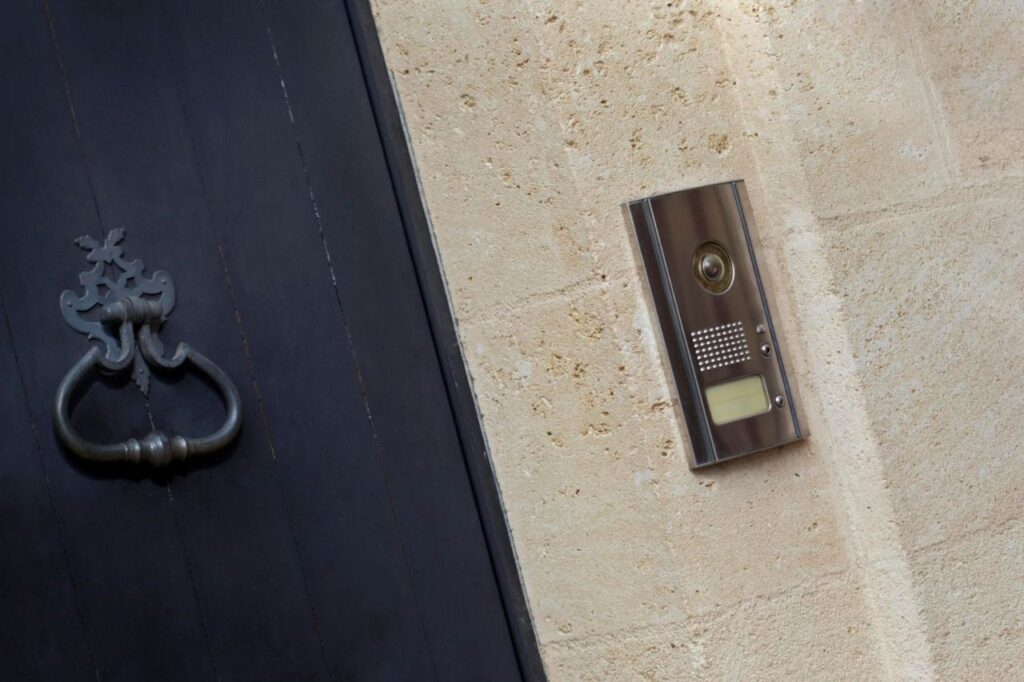Do you have lingering doubts about the stability of your home's security?
The security of your house or place of business should always be a primary concern, and if you ever feel unsafe, installing an intercom and/or an access control system can assist.
This article will discuss the what, why, and how of installing and using an intercom and an access control system. In order to give you a complete overview, we will start with an intercom system and explain its components and operation.
How an Intercom System Works
Any building, whether residential or commercial, can benefit greatly from both an intercom system and an access control system. Buildings of all kinds can benefit from the added safety and convenience provided by intercom & access control systems. These systems are useful for any location that wants to limit the number of people who can enter the building at once.
What Exactly Is an Intercom?
A two-way communication system, or intercom, enables conversation between a group of people in separate locations. Guests can gain access to a building through the intercom, allowing residents to unlock a gate or door for them from a distance.
There have been many different types of intercoms used in different contexts throughout history. In the early stages of the intercom, people had to talk to one another through metal tubing, which carried their speech like two cans joined by a string. However, contemporary electronic intercoms feature circuitry for digital audio and video transmission and reception.
Although there are many applications for intercom systems, its major goal is to improve the flow of information and allow for safer access to buildings and other areas.
What’s the Difference?
Intercom systems are freestanding electronic communication devices that provide two-way audio/video transmission within a single building or a small group of buildings. Different types of buildings use intercoms in different ways; for example, some houses just need a single intercom connection to the front door, while others with multiple units each need their own intercom gear.
Access control methods are automated security systems that use identifiers like PIN passwords, access cards, and RFID tags to grant users access to restricted areas and record when and where each user gained entry. This information can be invaluable for keeping tabs on the utilisation of your facilities and infrastructure.
A Breakdown of What Makes up an Intercom System
- Base Intercom Station: As the nerve centre of the system, here is where everything is coordinated. The base station is able to send out messages to all of the other nodes in the network.
- Intercom Stations: Typical intercom gear, if you will. Pressing a button on one of these devices initiates communication with other users. Wall-mounted units, desktop modules, and handheld devices may all be used with various systems.
- Intercom Substations: The speakers. In other words, they can listen in on transmissions from the hub but can't contribute their voices. They are typical in large public structures like universities, factories, train stations, and airports. Homeowners can use them to distribute music throughout their dwellings.
What Options Do You Have for an Intercom System in Your House?
There is a vast variety of intercom systems on the market today. In no particular sequence, below are the nine most common varieties of intercoms:
Intercom Wireless
Although hardwired systems are more secure and clear, wireless intercoms have been rapidly gaining market share due to their inexpensive price and ease of installation. Instead of calling a crew to your home or office to rip out walls and run cables, all you have to do is take it out of the box, plug in the charger, and you're good to go.
In order to communicate, wireless intercom systems use radio waves. Several cutting-edge options function as two-way radios, while others link to the internet via Wi-Fi or a data connection like 3G.
The primary problem with wireless systems is the limitations imposed by distance. Radio waves and Wi-Fi signals can only travel so far. If your home's router is located too far from your front door, the intercom system may not function properly. When using a radio-based system, such as a walkie-talkie, you may experience interference from nearby signals. Furthermore, wireless networks are the most vulnerable to intrusion.
A wireless intercom is a piece of telecommunications equipment that allows for audio communication across intercom stations without the need to run copper connections. A wired intercom can have wireless components added to it.
There are numerous varieties of wireless intercom systems available on the market today. Most wireless intercom systems communicate with one other using radio waves, operating on a frequency licenced by one of many government agencies. Certain wireless intercom systems use the 802.11 standard for their communications. Some systems advertise themselves as wireless even if they use the existing AC electrical wiring in the building for communication.
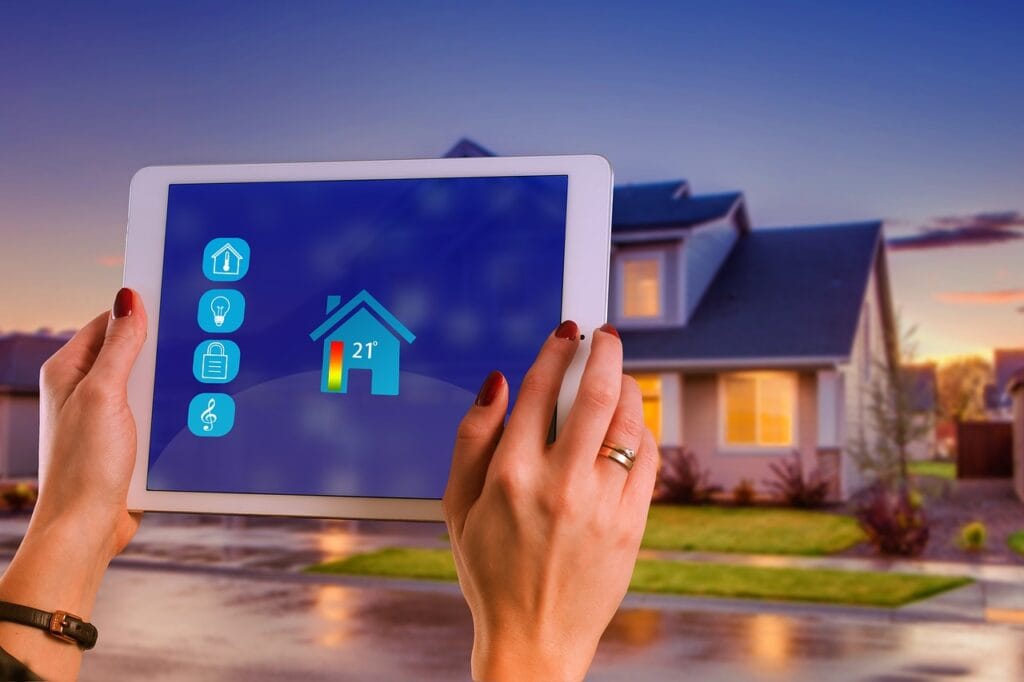
Wired Intercom
Once upon a time, before the advent of the wonderful wireless technology, everything was hard-wired. That means there are actual wires connecting each speaker and each station. Despite the widespread belief that wires should be avoided, hard-wired systems are nonetheless widely used in many buildings.
When a building is being constructed, electricians will typically run the wires for the intercom system. Like electrical lines, the wires must be concealed behind the walls. It can be time-consuming and expensive to connect an existing building.
A hardwired system may cost more, but it provides superior sound quality, safety, and dependability. Since everything is hardwired linked, there is no risk of a network going down or being hacked, and the signal is also less likely to be disrupted by environmental factors than it would be in a wireless system.
In addition to transmitting messages across the building, a wired intercom may also detect and unlock doors and gates. The parts of a wired intercom system include the microphone mount, the microphone connections, the foot controls, and the magnetic loop detector devices.
Carrier-Current
The intercoms that use carrier current are compatible with the building's current electrical infrastructure. In order for hubs to communicate with one another, they need AC power to generate AM signals at medium frequencies. Compared to hardwired systems, carrier-current installations are more affordable, but their clarity suffers. This old form of intercom is just as prone to disruptions as any other.
Remote Unlock Gate Entry
The intercoms used in automatic gates are quite similar to those found in other types of gates, with the addition of a few extra features. Remotely locking and unlocking gates and doors is another useful feature of automatic gate entry systems. The majority of today's systems also include cams so that you can observe who is on the opposite end of the line. Due to the length between the home and the gate, these are often hard-wired systems. If your automatic gate entrance intercom system is small enough and mounted to your front door, you can control it wirelessly using your home's existing Wi-Fi connection.
Mobile Connection
Whether wired or wireless, today's intercom systems typically connect to your smartphone via an app, allowing you to monitor and communicate with employees or family members at your home or business from anywhere. In order to use your intercom system, all you need is a mobile connection.
Audio Intercom
An audio intercom often called an intercommunication system, is a two-way talking device. A talkback system, or door phone, is another name for this communication tool. It's a piece of tech that can broadcast and receive audio, video, or both. If there is an intercom in the building, the individual speaking into the microphone will be heard by others.
Video Intercom
Modern IoT video intercoms allow homeowners to see visitors even when they're not there, thanks to their ability to monitor not just a single visitor but a network of security cameras. The elevators can be set to only stop at predetermined floors following the system's instructions.
Outdoor Intercom
Two-way communication between people inside and outside of a building is made possible by means of an external intercom. On top of that, residents can use the intercom to unlock doors and entrances for themselves and their guests.
Apartment Intercom
A two-way apartment intercom system allows residents and their guests to speak with one another and gain admission to the building through a central hub. The term "apartment buzzer" is also commonly used to describe this device. Most buildings include a communications system at the entrance called an intercom. A camera, a microphone, and a pair of speakers are all standard features.
Commercial Intercom
The term "commercial intercom system" refers to a device that allows for communication and admission into commercial properties. This method is designed for institutional settings, such as workplaces and factories. Using this method, company tenants can talk to visitors and give them access to the building from afar.
Office Intercom
Intercoms are a mechanism for people inside and outside of a building to talk to each other and the people inside the building. Because of the large number of visitors, such as clients, suppliers, people in charge of cleaning and maintenance, staff on business trips, and others, office intercoms are crucial to the efficient running of any company.
Gate Intercom
A gate intercom system is a type of property access solution that allows tenants to talk to visitors and let them in without having to physically be at the building. The intercom at the gate consists of two parts: The gate-based node also called the base station.
To What End Does an Intercom Function?
A microphone, speaker, and even a camera are all part of an intercom system, which is typically put at a building's front entrance. The base station sends the recorded audio or video to the outposts. Before being granted entry to the complete structure, visitors can view and speak with the staff in the substations.
How Does One Go About Setting up an Intercom System?
Depending on the intercom model, the wiring, and the site of the replacement or installation, the process of putting in a new intercom system can be time-consuming and expensive.
Video intercom systems that require individual substations in each unit to function are more complicated and costly to build. Investing in the necessary gear and wiring each individual unit would be prohibitively expensive. Comparatively, the price of installing a cordless intercom system that is compatible with a tenant's smartphone is far lower.
When It Comes to Intercoms and Other Forms of Access Control, What Would Work Best for You?
Analog (Classic) Audio and Video Intercoms
People who don't want to deal with applications and notifications but still need an easy way to communicate with coworkers may find traditional intercoms to be a suitable option. You can also use them if you spend most of your time at home, in which case it's not as important to get a text message when someone knocks on the door. If there is someone home, these conventional systems allow for two-way communication between the gate and the watchman. These intercoms can be either audio-only or a hybrid audio-visual system.
Internet Protocol Intercoms
IP intercoms, which can be accessed from anywhere with an internet connection, have many advantages over conventional intercoms. In many scenarios, the additional cost of using an IP intercom is not significantly more than the cost of using a high-quality analogue system. IP intercoms, thanks to their internet connectivity, can alert your phone whenever the gate or doorbell is rung. In order to truly confirm the identity of the person who rang the bell, you will be able to watch a live video feed of them on your smartphone.
Access Control Without Intercom
A basic home security system doesn't necessarily require an intercom to function. Keypads or RFID readers can be used for this purpose, allowing access via a gate or door without the need for the aforementioned visual or auditory verification processes.
Intercom & Access Control Solutions
Consider installing an intercom with built-in access control if you want more say over who enters your home and when. If a gate or door is equipped with an electronic latch for access control, the lock can be opened using the intercom system.
An RFID reader, keypad, or access button installed at the gate could be linked to an audio/video monitoring station inside. In addition to the same connections, IP intercom systems also allow for remote access control via a smartphone app, so you may unlock the door from anywhere in the world, no matter where your phone happens to be.
FAQs About Access Control & Intercom
How Common Are Access Control & Intercom Systems?
Access control and intercom systems are quite common in many types of buildings and facilities. Access control systems are used to regulate who is allowed to enter a particular area or building, and they can be used in a variety of settings, including residential buildings, commercial buildings, and government buildings. Intercom systems are used to allow communication between people in different parts of a building or facility.
Both access control and intercom systems can be found in a range of settings, including office buildings, schools, hospitals, airports, and other public facilities. They are also used in residential buildings, such as apartment buildings and gated communities, to provide security and control who has access to the premises.
Access control and intercom systems can be integrated into a single system or used separately, depending on the needs of the facility. These systems can range from simple, standalone systems to more complex, networked systems that can be accessed and controlled remotely.
Are Access Control & Intercom Systems Safe?
Access control and intercom systems can be effective in improving the security and safety of a building or facility. By regulating who is allowed to enter a particular area, access control systems can help to prevent unauthorized access and reduce the risk of theft, vandalism, and other security threats.
Intercom systems can also improve safety by allowing people in different parts of a building or facility to communicate with each other and request assistance if needed. For example, an intercom system can be used to call for help in an emergency or to alert security personnel of a potential security threat.
However, it is important to note that no security system is foolproof, and it is always important to follow good security practices in addition to using security systems. This includes following proper protocols for using the system, keeping the system up to date and well-maintained, and training employees or residents on how to use the system properly.
Are Access Control & Intercom Systems Cheap?
The cost of access control and intercom systems can vary significantly depending on the size and complexity of the system, as well as the features and capabilities it offers. Simple, standalone systems may be relatively inexpensive, while more complex, networked systems can be quite expensive.
In general, access control systems tend to be more expensive than intercom systems, as they often require more hardware and infrastructure, such as card readers, keypads, and access control panels. Intercom systems, on the other hand, may be less expensive, as they typically involve fewer components and may be easier to install.
It is important to carefully consider your budget and security needs when selecting an access control or intercom system. It may be worth investing in a more expensive system if it offers additional features and capabilities that are important to your security needs, but it may not be necessary to purchase a high-end system if a less expensive option will meet your needs. It is also a good idea to shop around and compare prices from multiple suppliers to ensure you are getting the best deal.
Are Access Control & Intercom Systems Mandatory?
The use of access control and intercom systems is not generally mandatory, but they may be required in certain situations or settings. For example, access control systems may be required in certain types of buildings or facilities as part of the building code or for safety and security purposes.
In some cases, access control and intercom systems may be required by law or regulation, such as in buildings that are required to meet certain security standards, such as government buildings or buildings that handle sensitive or classified information.
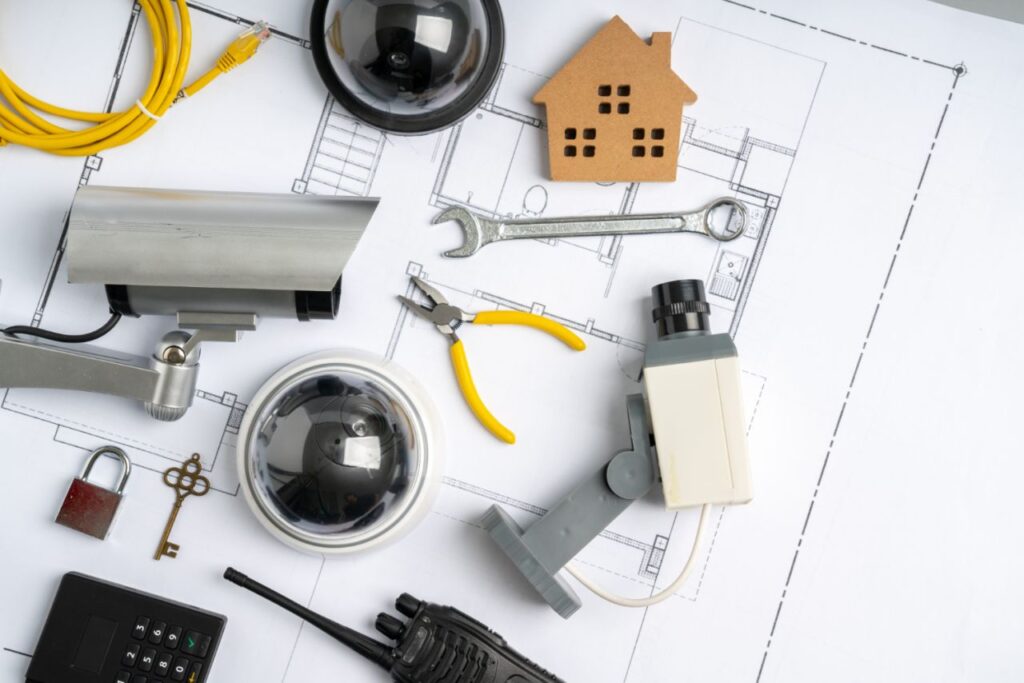
However, in most cases, the use of access control and intercom systems is not mandatory and is typically a matter of choice for the owner or operator of the building or facility. Many building owners and operators choose to use these systems as a way to improve security and protect against unauthorized access or potential security threats.
How Long Will It Take To Install an Access Control & Intercom System?
The amount of time it takes to install an access control and intercom system will depend on a variety of factors, including the size and complexity of the system, the type of building or facility, and the installation location.
For a small, standalone system, installation may take just a few hours. However, for a larger, more complex system, installation may take several days or even longer, depending on the size and complexity of the system.
In general, it is important to allow sufficient time for the installation of an access control and intercom system, as it may be necessary to make modifications to the building or facility, such as running new wiring or installing mounting brackets. It is also a good idea to work with a professional installation team to ensure that the system is installed properly and meets all necessary safety and security standards.
Conclusion
The installation of both an intercom and an access control system is highly recommended for any building, whether residential or commercial. Independent electronic devices called "intercoms" transmit audio and video in both directions between locations within a single or multiple structures. The intercom system allows visitors to call ahead and have the building's occupants open a gate or door for them. An intercom system that transmits audio signals wirelessly is called a wireless intercom. Different options include things like two-way radio functionality and internet connectivity (via Wi-Fi or 3G).
Wireless intercoms, thanks to their low price and simple setup, have been rapidly expanding their market share. Radio waves are used in wireless intercom systems for transmission, with the frequency being licenced by one of several governing bodies. It's important to be aware that not all "wireless" systems actually use radio waves, as some do; some use the building's existing AC electrical wiring for data transfer instead. To link an already constructed structure can be both costly and time-consuming. The wired intercom can also be used to detect and unlock doors and gates.
With a smart intercom, you can check in on your home or place of business and talk to your loved ones or employees from the convenience of your phone. Most modern systems also feature cameras that let you see the person on the other end of the line.
Content Summary
- The security of your house or place of business should always be a primary concern, and if you ever feel unsafe, installing an intercom and/or an access control system can assist.
- This article will discuss the what, why, and how of installing and using an intercom and an access control system.
- In order to give you a complete overview, we will start with an intercom system and explain its components and operation.
- Any building, whether residential or commercial, can benefit greatly from both an intercom system and an access control system.
- Buildings of all kinds can benefit from the added safety and convenience provided by intercom & access control systems.
- A two-way communication system, or intercom, enables conversation between a group of people in separate locations.
- Although there are many applications for intercom systems, its major goal is to improve the flow of information and allow for safer access to buildings and other areas.
- Intercom systems are freestanding electronic communication devices that provide two-way audio/video transmission within a single building or a small group of buildings.
- Access control methods are automated security systems that use identifiers like PIN passwords, access cards, and RFID tags to grant users access to restricted areas and record when and where each user gained entry.
- This information can be invaluable for keeping tabs on the utilisation of your facilities and infrastructure.
- The base station is able to send out messages to all of the other nodes in the network.
- There is a vast variety of intercom systems on the market today.
- In no particular sequence, below are the nine most common varieties of intercoms: Intercom Wireless Although hardwired systems are more secure and clear, wireless intercoms have been rapidly gaining market share due to their inexpensive price and ease of installation.
- In order to communicate, wireless intercom systems use radio waves.
- If your home's router is located too far from your front door, the intercom system may not function properly.
- When using a radio-based system, such as a walkie-talkie, you may experience interference from nearby signals.
- There are numerous varieties of wireless intercom systems available on the market today.
- Certain wireless intercom systems use the 802.11 standard for their communications.
- Some systems advertise themselves as wireless even if they use the existing AC electrical wiring in the building for communication.
- Despite the widespread belief that wires should be avoided, hard-wired systems are nonetheless widely used in many buildings.
- When a building is being constructed, electricians will typically run the wires for the intercom system.
- It can be time-consuming and expensive to connect an existing building.
- In addition to transmitting messages across the building, a wired intercom may also detect and unlock doors and gates.
- The parts of a wired intercom system include the microphone mount, the microphone connections, the foot controls, and the magnetic loop detector devices.
- The intercoms that use carrier current are compatible with the building's current electrical infrastructure.
- Remotely locking and unlocking gates and doors is another useful feature of automatic gate entry systems.
- If your automatic gate entrance intercom system is small enough and mounted to your front door, you can control it wirelessly using your home's existing Wi-Fi connection.
- In order to use your intercom system, all you need is a mobile connection.
Wireless unit
The wireless intercom uses a different type of radio frequency and tends to be less expensive than other options. There is basically no installation required which means you can start using them right out of the box.



